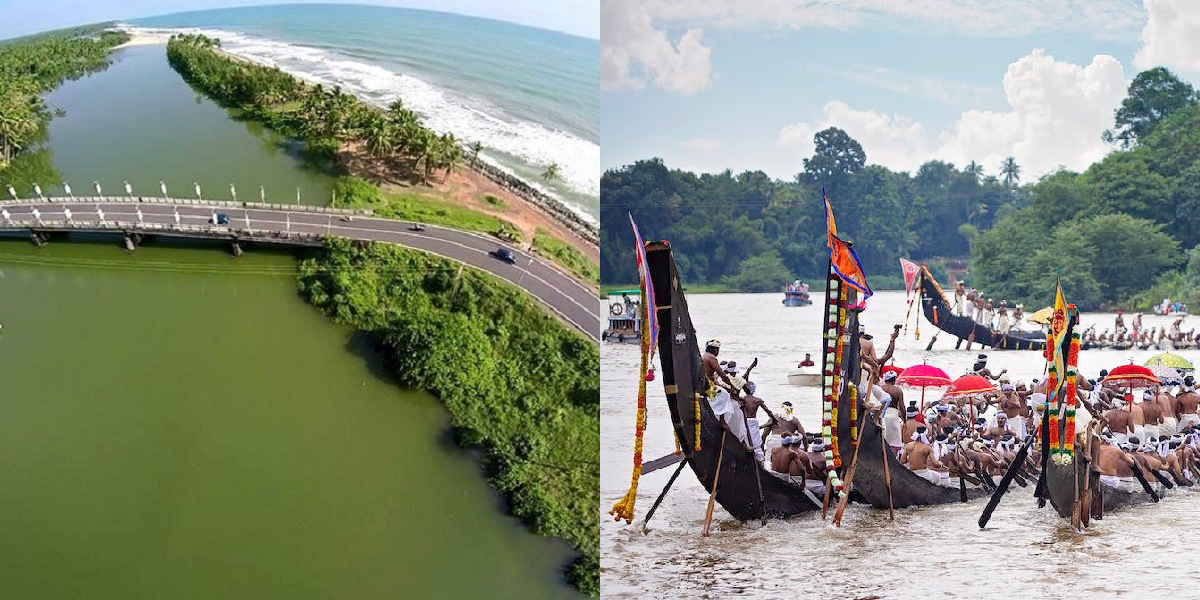The listicle ranked Kerala at 13th spot and identified it as a place to learn climbing a palm tree, visit a temple during festival and get a sustainable taste of village life.

A New York Times (NYT) article added another feather to the cap of Kerala Tourism by including “God’s Own Country” in its ‘52 Places to Go in 2023’ list.
The NYT listicle, which has ranked Kerala at 13th spot, also lauded the state as a “Responsible Tourism Destination”.
The British capital London topped the list, followed by Morioka (Japan), Monument Valley Navajo Tribal Park (US), Kilmartin Glen (Scotland) and Auckland (New Zealand).
“New York Times and other international recognitions are a big boost for our morale. In the last one year, the number of domestic tourists coming to Kerala is at an all-time record,” Kerala’s Tourism Minister PA Mohammed Riyas told South First.
“In 2023, we will our push caravan, responsible and experiential tourism initiatives. This will be done with the active participation of the people of the state as we want them to feel that they are the hosts,” Riyas added,
The newly introduced “caravan tourism” is now being promoted globally. Branded as ‘Keravan Kerala: Go Caravanning’, it will see private sector players operating “specially-built caravans for travel, leisure and stay”.
18 German and Swiss Caravans passing via Kerala as a part of their world tour. Kerala is becoming a favourite destination for #caravantravelers all over the world. This will give a good boost for #caravanpolicy by #keralatourism pic.twitter.com/yVcBe54cPv
— PA Mohamed Riyas (@riyasdyfi) December 8, 2022
Local communities will also have a stake in the game as they are being encouraged to set up “eco-friendly Caravan Parks” for travellers to plug into power and sewage connections.
A place of many attractions for tourists, Kerala has always attracted visitors from within India as well as globally.
13. Kerala, India https://t.co/DPgd5gSmZw
— New York Times Travel (@nytimestravel) January 12, 2023
Meanwhile, in November last year, the Kerala government’s tourism project — Water STREET (Sustainable, Tangible, Responsible, Experiential, Ethnic Tourism) — bagged “Responsible Tourism Global” award at the World Travel Mart (WTM) in London.
In its opening remarks, the NYT article identified Kerala as a place where one can “learn to climb a palm tree, visit a temple during an annual festival and get a sustainable taste of village life”.
Instead of using pictures of Kerala’s famed backwaters, or its beaches, or the many shades of green it is famous for, the listicle used a temple festival as its feature image.
A unique observation it makes about Kerala is the state government’s award-winning approach that allows visitors to experience village life while supporting the communities that host them.
“We travel to immerse ourselves in other cultures, but some forms of community tourism put residents on display without offering benefits. Not so in Kerala — a southern Indian state celebrated for its beaches, backwater lagoons, cuisine and rich cultural traditions like the Vaikathashtami festival,” the NYT travel feature noted.
It sees Kumarakom, a tourist village on the Vembanad Lake in the Kottayam district, as one of several “responsible tourism destinations” in the state.
“Visitors can paddle through jungly canals, weave rope from coconut fiber and even learn to climb a palm tree,” it added.
About Maravanthuruthu, another village in the Kottayam district, the NYT article said that visitors can follow a storytelling trail and enjoy village street art before taking in an evening performance of a traditional temple dance.
Besides this, Kerala is renowned for its water sports, wildlife, waterfalls, beaches, forts and palaces, biodiversity museums, pilgrim centres, backwaters, aqua tourism, hills, boat races and several other places of interest.
Nicknamed as the “Spice Garden of India”, it is also known for its many colourful festivals.
Tourism Minister Muhammad Riyas, in his message on social media about the “special mention” of Kerala in the NYT listicle, said he expected to continue receiving support from people for the Kerala government’s popular tourism policy.
“Before Covid-19, the annual contribution of Kerala Tourism to the state GDP was around 40,000 crore with 15 lakh employed. Now we are steadily bouncing back and are focused more on domestic travel. We have also formulated an intensive marketing strategy,” Riyas said.
The project which won an award at the London World Travel Mart was evolved on the basis of the UN’s World Tourism Organisation (WTO) motto “Tourism for Inclusive Growth”.
Under the project, clogged water bodies were cleaned and conserved and opened to tourists. Now these water bodies would be protected through tourism activities.
Initiated under the employment guarantee scheme, STREET was implemented with active community participation, which cleaned up the canals and other water bodies so that they could be used as a tourist spots.
Adventure activities such as kayaking, shikara boats and canoe tours were introduced. Tourism clubs were opened to coordinate with the activities of the various units.
In giving Kerala the award, the jury made a special mention of Maravanthuruthu village where 18 canals were cleaned up and deepened. Houses were also turned into art centres with the creative use of graffiti.
Besides Water Street, other projects such as Green Street, Art Street, Village Life Experience Street, Food Street and Agri Street are also in pipeline.

Apr 16, 2024

Apr 16, 2024

Apr 16, 2024

Apr 16, 2024

Apr 16, 2024